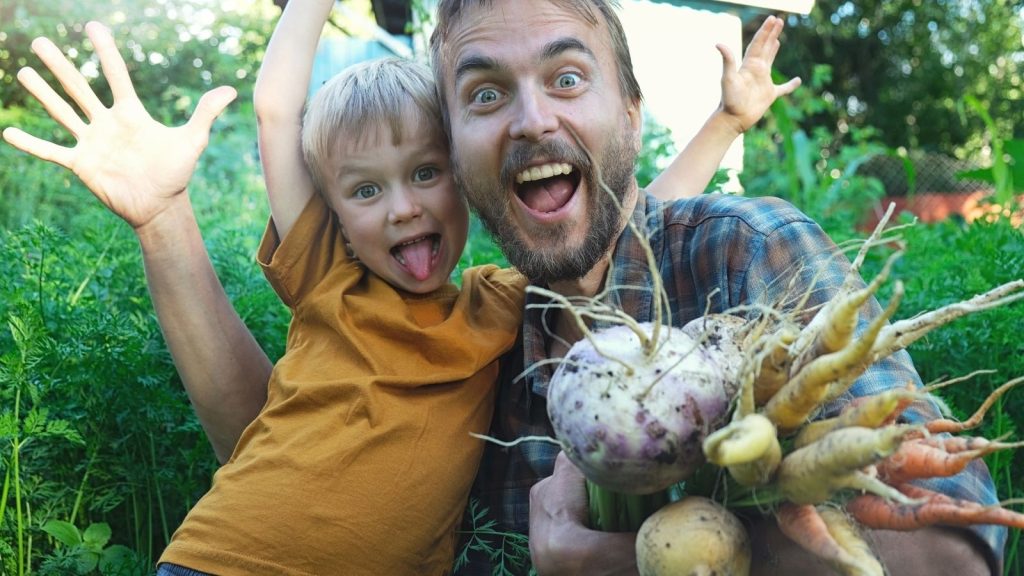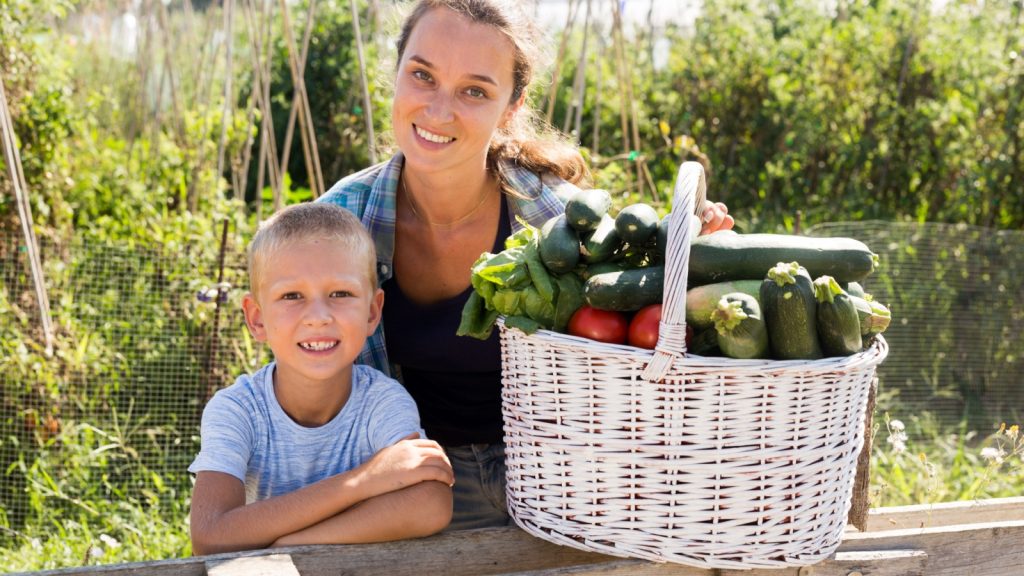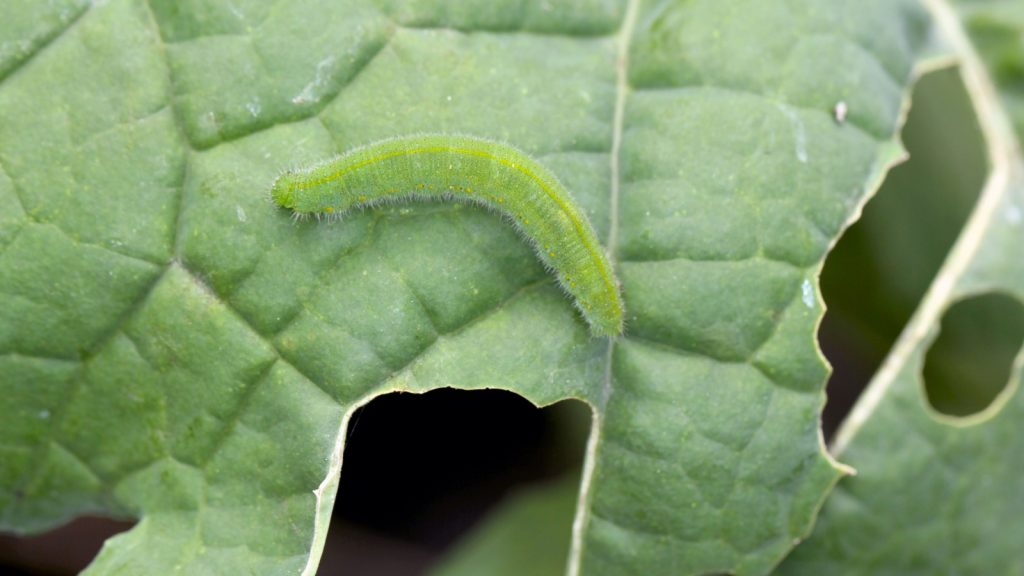Picture this: a pantry stocked with home-canned preserves, a fridge brimming with fresh greens, eggs, and milk, and a stew simmering on the hob from yesterday’s leftovers. Your family is well-fed with wholesome food, and your wallet remains largely untouched. This is the reality of subsistence farming.
At its heart, subsistence farming involves growing and raising just enough food to sustain your household. It’s not about surplus or profit, but survival and self-reliance. By adopting this lifestyle, you can significantly cut costs while ensuring your family eats well. In uncertain economic times, subsistence farming offers a practical solution for reducing dependency on external systems.

Although many associate subsistence farming with impoverished regions, there’s a growing interest in reviving this age-old practice, even in modern and affluent societies. And for good reason. People are discovering that growing their food not only reduces costs but also improves food security and quality of life.
The History of Subsistence Farming
The origins of subsistence farming date back to humanity’s shift from nomadic lifestyles to settled communities. During the Neolithic Revolution, which began about 12,500 years ago, people transitioned from foraging to domesticating plants and animals. This shift marked the beginning of agriculture as a cornerstone of human civilisation.
This era saw the emergence of permanent villages, more advanced tools, and even the domestication of cats and dogs. However, despite having more food overall, diets often became less varied and less nutritious, with a heavy reliance on grains and dairy. This focus on staple crops provided security but often came at the expense of dietary diversity and long-term health.
These early subsistence farmers worked tirelessly to sustain themselves, relying on basic tools and methods. Despite the challenges, their practices laid the groundwork for modern agriculture. Without their ingenuity, many of the techniques we take for granted today would not exist.
The Advantages of Subsistence Farming
Subsistence farming has notable benefits. Farmers operate on small plots, raising food for their families and often materials for clothing or shelter. This method offers minimal expenses, sustainable practices like seed-saving, and natural fertilisers such as manure. It also fosters a closer connection to the land and a deep understanding of local ecosystems.
Living in rural areas further reduces costs, and without the need to transport crops to market, farmers avoid additional expenses. These benefits make subsistence farming an attractive option for those seeking a simpler, more self-sufficient lifestyle.
The Disadvantages of Subsistence Farming
On the flip side, subsistence farming isn’t without its challenges, particularly when viewed through a modern lens. Labour limitations mean one person can only accomplish so much. This often results in long working hours and physical exhaustion, especially during peak planting and harvesting seasons.
Tools are often primitive, and access to electricity or running water is uncommon. Farmers are also vulnerable to nature’s unpredictability—droughts, floods, and other disasters can jeopardise their livelihoods. For many, the lack of a safety net adds constant pressure, making resilience and adaptability crucial.
Lessons from the Past
During my university days in the 1980s, I worked on an archaeological dig at the Schomaker Site, a Fort Ancient Village. We replicated their farming methods, using primitive tools like shell-tipped hoes and clay pots for carrying water. Despite my farming background, I found the work backbreaking. It offered a stark reminder of how reliant early farmers were on community collaboration and shared effort to survive.
Subsistence Farming Today
Contrary to popular belief, subsistence farming isn’t a relic of the past. According to a 2015 United Nations study, around 25% of the global population—about two billion people—still rely on this method, particularly in developing regions such as Sub-Saharan Africa, Southeast Asia, and Latin America. This number highlights how critical subsistence farming remains in ensuring food security for millions worldwide.
In Tanzania, for example, 73% of the population practices subsistence farming. For these families, subsistence farming is a lifeline, providing just enough to sustain them throughout the year. Their reliance on traditional farming methods often reflects centuries of knowledge passed down through generations.
Subsistence Farming in Developed Countries
Interestingly, subsistence farming is also gaining traction in developed nations. Many individuals are embracing this lifestyle not out of necessity, but as a conscious choice to live sustainably and reduce reliance on modern consumerism. This resurgence is often driven by a desire for healthier, organic produce and a return to slower, more intentional living.
Subsistence vs. Self-Sufficiency
While similar, subsistence farming and self-sufficiency have different connotations. Subsistence farming often implies a necessity-driven approach, whereas self-sufficiency is about independence and pride in meeting one’s own needs. Both, however, promote a lifestyle of resilience and sustainability. Choosing one or the other depends largely on personal goals and access to resources.
A Natural Way to Farm
Traditional subsistence farming relies on natural, low-impact methods. Unlike modern farmers who may depend on products like neem oil or fish emulsion, subsistence farmers use what’s available locally. This approach minimises environmental impact and costs. Their methods often provide valuable lessons in working harmoniously with nature instead of exploiting it.
Modern Perspectives
Today’s subsistence farmers often blend traditional practices with modern conveniences. While striving for self-sufficiency, many still purchase items they can’t produce locally, such as sugar or coffee. The goal is to minimise inputs and maximise the value of every tool or resource. This balance ensures the lifestyle remains practical without becoming unnecessarily restrictive.
Simplifying Life
Subsistence farming aligns with principles of simplicity, zero waste, and sustainability. By growing more with fewer resources, farmers can reduce reliance on fossil fuels and enjoy a more harmonious relationship with the land. It’s a lifestyle that prioritises quality over quantity, focusing on what truly matters for long-term well-being.
Starting Out as a Subsistence Farmer
Land
Land is often the most significant expense for aspiring farmers. Many opt for undeveloped plots, building their homes gradually to save costs. To sustain one person, you’ll need about two acres for crops and livestock. This allows room to rotate crops, support biodiversity, and ensure long-term soil health.
Tools
Subsistence farming keeps expenses low by relying on minimal tools, often favouring traditional methods like animal-powered ploughs. Deciding which tools are essential is a key consideration. Investing in durable, multipurpose tools can save time and money while ensuring consistent results over time.
Income
Modern subsistence farmers often supplement their lifestyle with outside jobs or self-employment. Lowering costs through self-reliance can stretch a limited income further, but rural areas may present challenges with lower wages and fewer opportunities. Diversifying income streams, such as selling handmade goods or offering workshops, can provide additional financial stability.
Subsistence farming isn’t just a practice of the past—it’s a model for a sustainable future. Whether you fully embrace this lifestyle or simply borrow elements for your own garden, the principles of self-reliance and simplicity can benefit you, your wallet, and the planet. It’s a way to reconnect with the earth while building a more secure and rewarding life for yourself and your family.
Ellen Reed lives where the road ends and the quiet begins. Her work tends to the tender space between solitude and connection, loss and joy, seed and harvest.
She's an author and journalist. When she's not in her garden, she's drinking tea and playing with her puppy.


